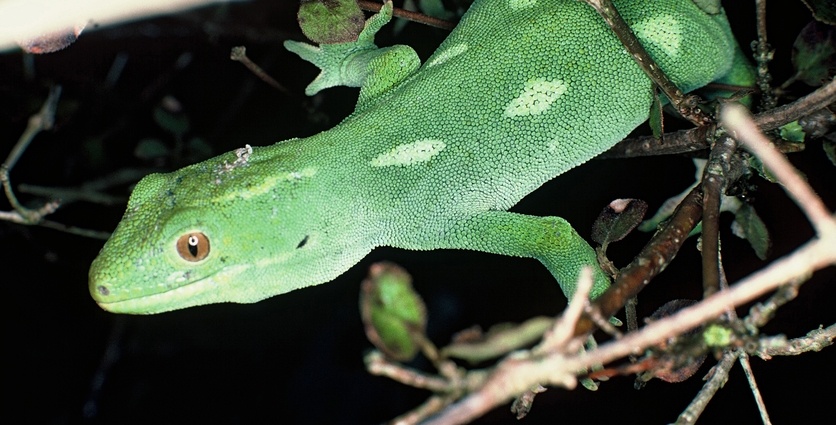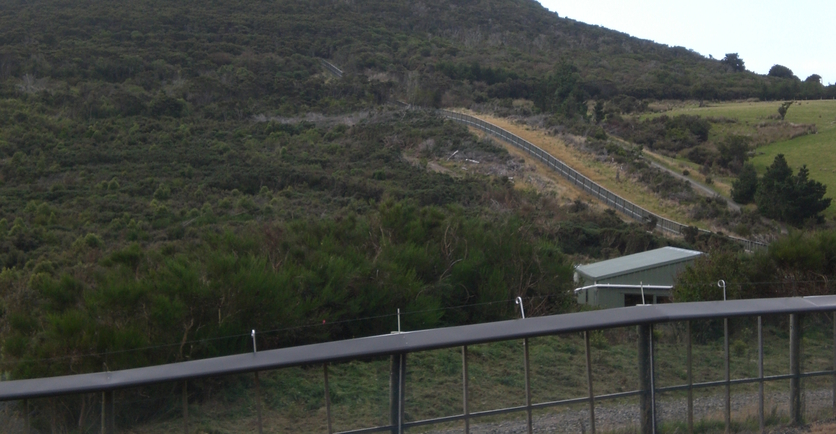In conservation management, translocation is the intentional movement of plants or animals to a new area. There are 3 categories of translocation
- Introduction: A number of individuals are moved into an area where their species is not known to have existed previously.
- Reintroduction: A number of individuals are moved into an area where their species used to exist.
- Restocking: A number of individuals are added to an existing population.
A number of our native reptiles and amphibians have been successfully translocated. This first took place in 1985 when 100 Maud Island frogs were moved to a new location. Other successful translocations have involved Hamilton’s frog, the Marlborough green gecko and the tuatara.
The benefits of translocation
Translocation is an important tool in species conservation, especially in New Zealand where the majority of our native species are threatened by introduced predators. Translocation to predator-free islands has become an increasingly important strategy to save our endangered species.
Translocation has a number of other important benefits:
- Translocation to a mainland or offshore island can provide opportunities for more in-depth scientific research.
- Reintroduction (via translocation) plays an important role in any project that aims to restore a habitat to its natural state.
- Translocation enables the establishment of multiple populations to minimise the risk of a single population being wiped out by a random event, such as a fire or introduction of a new disease.
- Translocation can be used to add genetic diversity to an existing population.
The problems with translocation
Translocation is an effective tool, but it can also be a risky process. In New Zealand, all translocations are carefully planned and must be approved by the Department of Conservation (DOC), who administer the Wildlife Act 1953.
Apart from the often significant expenses involved, there are many other issues to consider, including the quality of habitat in the new area, the number and sex of the individuals for release, disease testing and post- translocation monitoring. If the plan involves the translocation of multiple species to one location – for example, a new mainland island – the order of the translocations and potential interactions of the species needs to be carefully considered. For example, the release of a lizard species at the same time as weka (which eat lizards) could compromise the success of the lizard translocation.
A number of New Zealand scientists hope their research will improve the success of future translocations. For example, Professor Alison Cree from the University of Otago has been involved in a project investigating whether soil temperatures in Otago will be suitable for tuatara translocations. Jen Germano, a PhD student from the University of Otago, has been developing a non-invasive tool to work out the sex of our native frogs – a translocation is more likely to be successful if there is a balance of males and females, and Jen’s research will make this job a lot easier.
Translocation management in New Zealand
When DOC considers translocation proposals, they need to consult with a number of groups, for example, local iwi at the source population site as well as iwi at the new area. DOC also has many other factors to consider, including the stability of the source population and the suitability of the proposed site.
The actual process of translocation varies from species to species. It typically includes the following steps:
- Establishing clear goals for the translocation.
- Securing the support of local stakeholders.
- Identifying a suitable source population.
- Careful checks of the proposed new site.
- Capturing the predetermined number of individuals. These need to be an appropriate mix of males and females. Sometimes, individuals may be selected from a captive population, so additional checks are made in advance, such as disease testing.
- Moving the animals to the new site as quickly as possible, usually by helicopter using suitable containers.
- A welcome to the new site by local iwi.
- Release into the specified area. This may include specially designed habitats or artificial burrows.
- Post-translocation monitoring. Sometimes this includes monitoring of information from electronic tags placed on the animals before release.
Actvity idea
In the Exploring genetic variation activity, students gain an understanding of the importance of genetic diversity within a population. This is something that scientists need to consider before preparing for a translocation of a threatened population.


